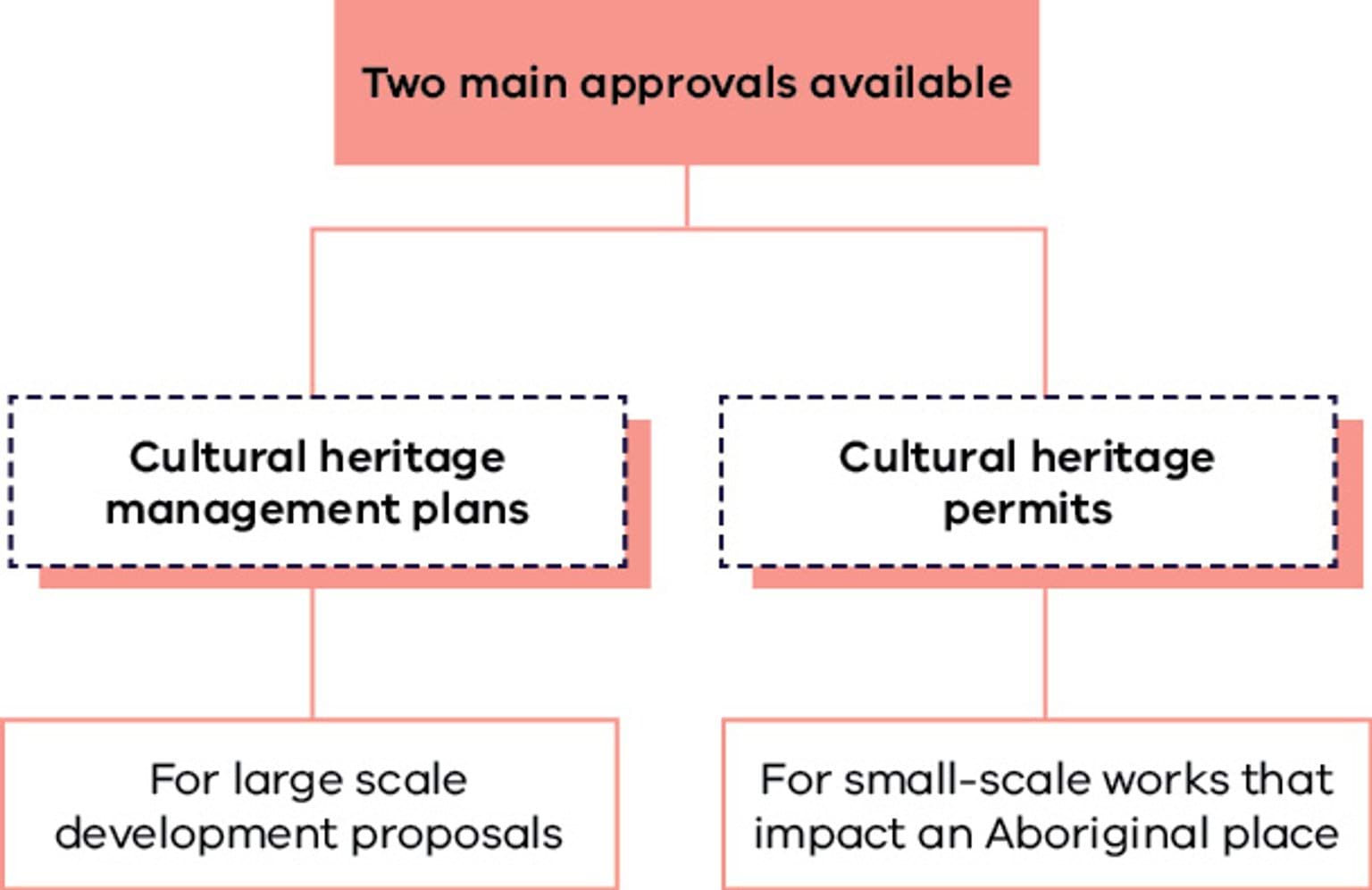This document explains the two main processes that protect and manage cultural heritage; cultural heritage management plans and cultural heritage permits.
For more information on what Aboriginal cultural heritage is and how we celebrate it see An introduction to Aboriginal cultural heritage in Victoria.
For more information on the two main processes that protect and manage cultural heritage - cultural heritage management plans and cultural heritage permits - see The Aboriginal Heritage Act 2006 explained.
Introduction
Aboriginal Heritage Act 2006
Aboriginal cultural heritage in Victoria is protected in law by the Aboriginal Heritage Act 2006 (the Act).
The Act creates a system to protect and manage cultural heritage in Victoria.
When land is developed, Aboriginal cultural heritage can be at risk. Under Victoria’s system Aboriginal cultural heritage is identified early in the planning process, helping to avoid accidental damage or destruction.
The Act makes it illegal to harm Aboriginal cultural heritage unless a relevant approval has been received. The Act provides the processes to obtain approvals and the key parties who decide the approvals.
Aboriginal cultural heritage
Ancestral Remains
The remains of an Aboriginal person from the past. Victoria’s laws recognise that First Peoples are best placed to care for Ancestral Remains and have the right to lay their Ancestors to rest on Country.
Tangible cultural heritage
Aboriginal places and objects such as rock art, fish traps, scarred trees and stone tools. Physical things that can be seen and touched, and important places where cultural heritage is found.
Intangible cultural heritage
Traditional Aboriginal knowledge including oral traditions, arts, stories, rituals, festivals, social practices, craft, and environmental and ecological knowledge.
How to consider cultural heritage in your proposed development or project
When planning your development or project, there are a series of questions to answer to consider cultural heritage appropriately.
You can also go through this process online using the cultural heritage planning tool.
Approvals to protect and manage cultural heritage during land use or development
Activity definitions when considering cultural heritage
Cultural heritage management plan process
A cultural heritage management plan (CHMP) includes a regulated, expert assessment of the impact of proposed land use activity on Aboriginal cultural heritage values.
A CHMP is required when a ‘high impact activity’ is planned for an ‘area of cultural heritage sensitivity’.
The CHMP outlines measures a sponsor (the person seeking to undertake the proposed activity) must take to manage and protect Aboriginal cultural heritage before, during and after a proposed activity,
Read about cultural heritage management plans.
The process
Stages of the cultural heritage management plan process
Cultural heritage permit process
Several actions are controlled under the Act. Permits may be obtained for these actions.
Controlled or unlawful activities include:
- harming an Aboriginal place
- selling an Aboriginal object that was not made for sale
- removing an Aboriginal object from Victoria
- disturbing or excavating land to uncover or discover Aboriginal cultural heritage
- carrying out research on an Aboriginal place or object
- taking an Aboriginal object out of Victoria for research in another state or country.
Permits are for activities that are not a ‘high impact activity’ but will, or are likely to, cause harm to cultural heritage. A permit must be obtained before starting your activity.
If your proposed project requires a CHMP, you cannot get a permit for the activity. The CHMP provides any necessary permissions.
More information on cultural heritage permits, including guidelines to help filling in the application, the application form and details on fees are available at cultural heritage permits.




